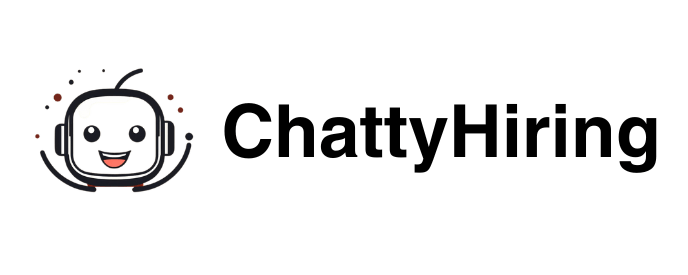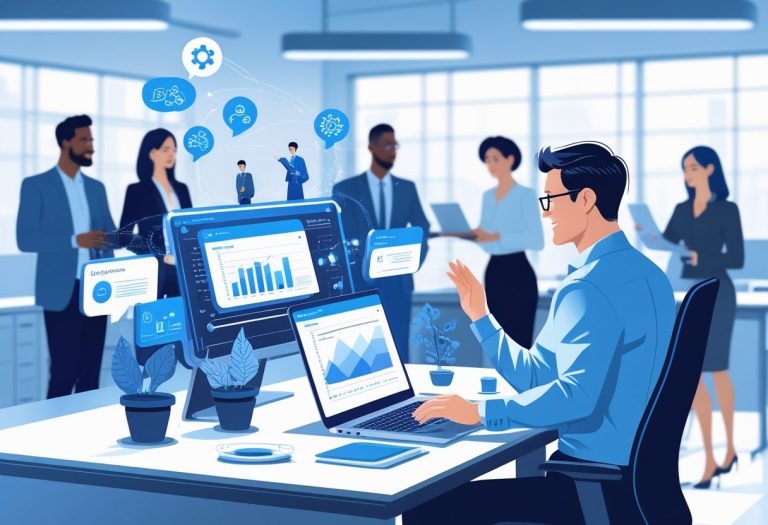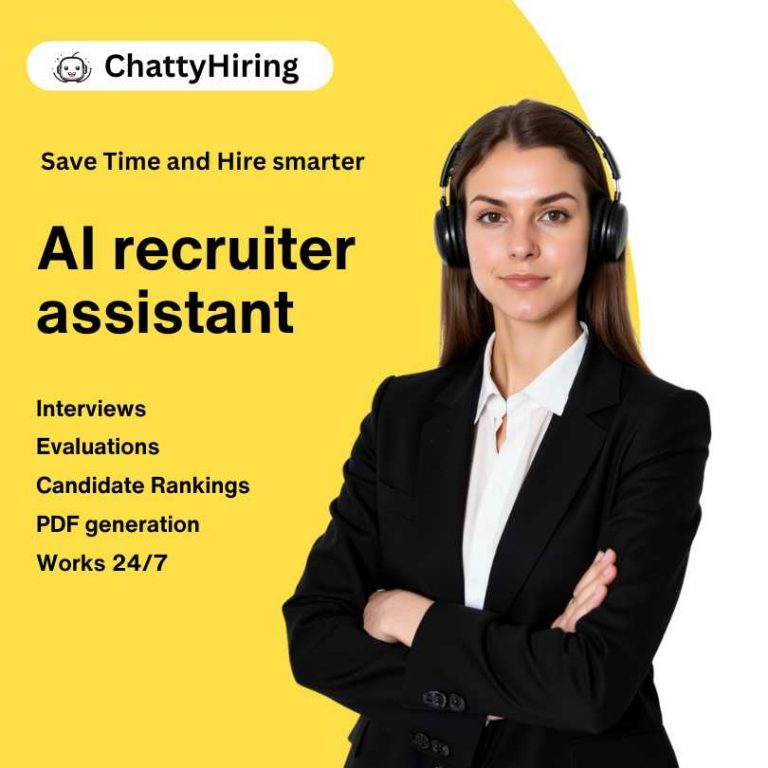HR managers spend countless hours on repetitive tasks that could be streamlined with the right tools. ChatGPT prompts can transform how HR professionals handle recruitment, employee engagement, performance reviews, and compliance documentation by automating routine processes and generating high-quality content in seconds.
The key is using well-crafted prompts that deliver accurate and relevant responses for specific HR challenges.

Smart HR managers are already using AI to create job descriptions and develop interview questions. They also build employee onboarding materials and streamline manual work.
These powerful ChatGPT prompts help HR professionals reduce manual work while maintaining the personal touch employees expect. The difference between basic and excellent results comes down to prompt structure and customization.
This guide reveals the five most effective ChatGPT prompts that HR managers can implement right away. Each prompt includes real examples, specific use cases, and strategies for customizing them to fit different organizational needs.
Overview of Essential ChatGPT Prompts for HR Managers
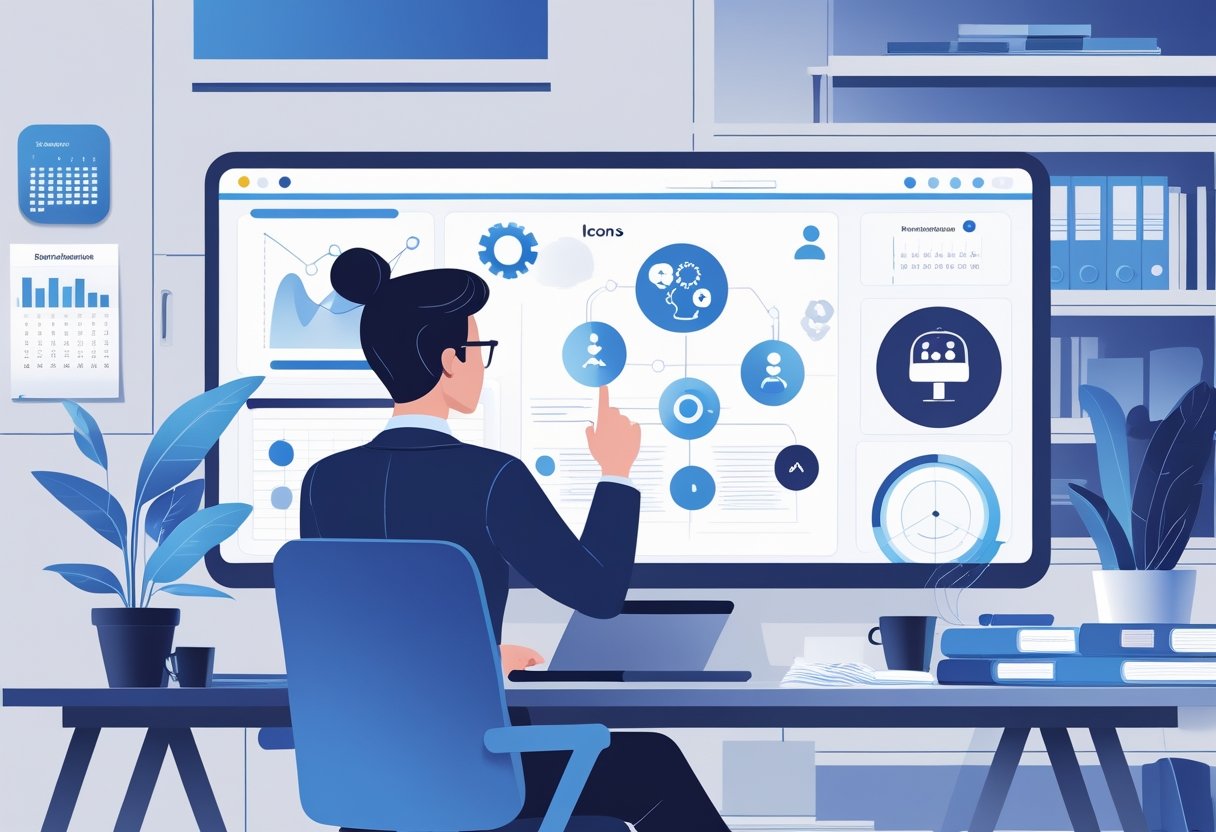
ChatGPT transforms HR operations by automating routine tasks, eliminating recruitment bias, and providing data-driven insights for strategic decision-making.
The technology streamlines everything from candidate screening to employee development programs.
Key Benefits of Using ChatGPT in HR
Time Savings and Efficiency
ChatGPT prompts for HR professionals can cut time spent on repetitive tasks by up to 70%. HR managers no longer need hours to draft job descriptions or employee communications.
The AI can handle multiple tasks at once, like creating policy documents, analyzing candidate resumes, and preparing interview questions.
Cost Reduction
Organizations save money by reducing external recruitment agency fees. ChatGPT enables internal teams to manage more of the talent acquisition process independently.
Training costs drop when AI assists with onboarding materials and employee development plans. Companies also spend less on third-party content creation.
Improved Accuracy
AI eliminates human errors in routine documentation. Job postings have consistent formatting and required legal language.
Enhanced Communication Quality
ChatGPT produces professional, clear communication across all HR functions. Employee emails, policy updates, and training materials stay consistent in tone and clarity.
How ChatGPT Enhances HR Decision-Making
Data-Driven Candidate Assessment
Essential ChatGPT prompts for HR professionals enable objective candidate evaluation. The AI compares resumes against specific job requirements without personal bias.
HR managers receive detailed analysis of each applicant’s qualifications. The system highlights skill matches and potential gaps.
Skills Gap Analysis
ChatGPT identifies workforce weaknesses by analyzing current employee capabilities against future business needs. This guides recruitment priorities and training investments.
Performance Pattern Recognition
The AI spots trends in employee feedback and performance data. HR teams can address issues before they escalate.
Strategic Planning Support
ChatGPT helps HR managers create comprehensive workforce plans. It considers company growth projections, industry trends, and current team capabilities.
Common Use Cases for HR Teams
Recruitment and Hiring
| Task | ChatGPT Application |
|---|---|
| Job Descriptions | Creates compelling, SEO-optimized postings |
| Resume Screening | Ranks candidates by qualification match |
| Interview Prep | Generates role-specific questions |
| Offer Letters | Drafts personalized employment offers |
Employee Development
HR teams use ChatGPT to design training programs tailored to specific skill gaps. The AI creates learning paths that match individual employee needs and company objectives.
Performance review templates become more comprehensive and fair. ChatGPT ensures all relevant areas are covered consistently across departments.
Policy and Compliance
ChatGPT prompts for human resources help maintain updated employee handbooks. The AI incorporates new regulations and company policy changes automatically.
Compliance documentation becomes standardized and thorough. Legal requirements are consistently addressed across all HR materials.
Employee Communication
Internal announcements maintain professional quality and appropriate tone. ChatGPT ensures messages are clear and actionable for all employee levels.
Conflict resolution communications become more neutral and solution-focused. The AI helps HR managers address sensitive situations diplomatically.
Top 5 ChatGPT Prompts: Examples and Best Use Cases
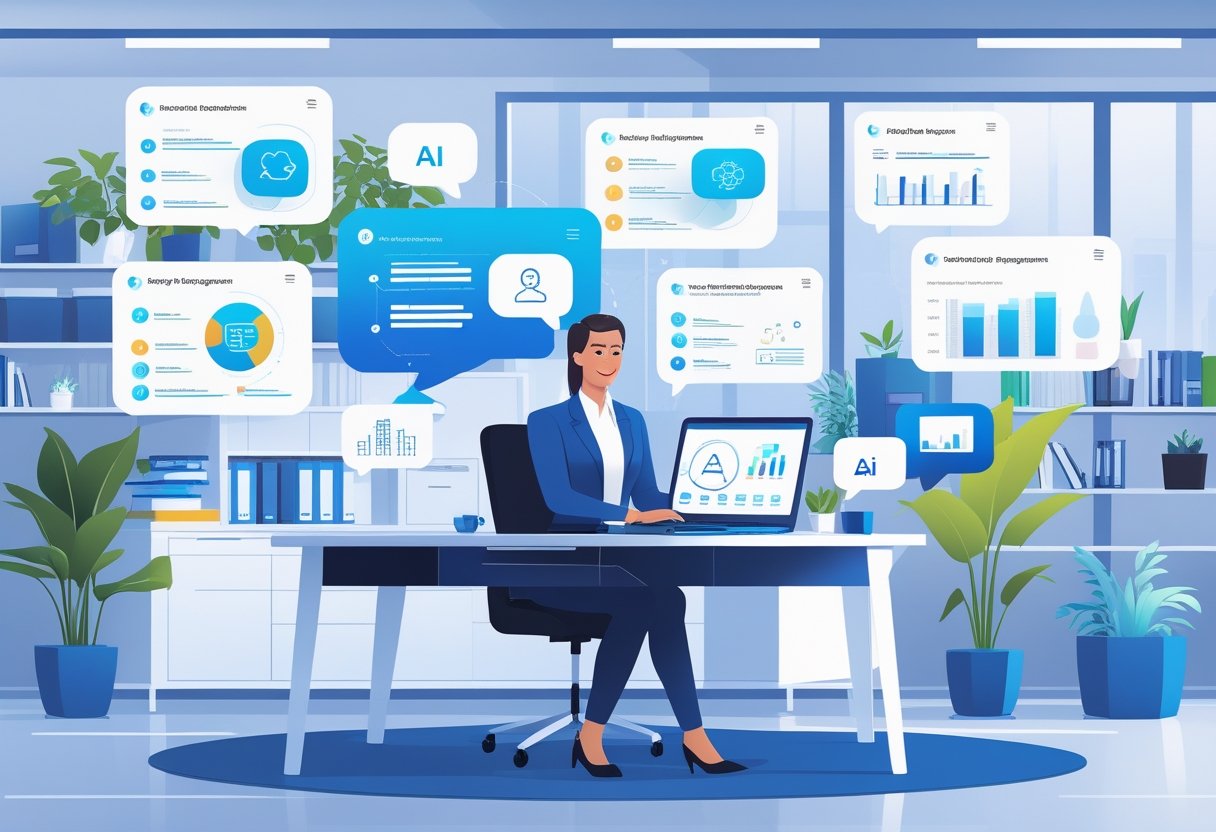
These specialized prompts address the most critical HR functions that managers handle daily. Each prompt includes specific examples and practical applications that HR professionals can implement immediately to streamline their workflows.
Prompt for Talent Acquisition and Recruitment
Basic Prompt: “Create a comprehensive job description for [position title] that includes required qualifications, responsibilities, and company culture elements. Make it engaging for top candidates while filtering out unqualified applicants.”
HR managers can enhance this prompt by adding company size, industry, and unique requirements. The AI will generate job postings that attract qualified candidates while reducing time spent on unsuitable applications.
Advanced Application: “Develop interview questions for a [position] that assess both technical skills and cultural fit. Include behavioral questions and follow-up prompts for deeper evaluation.”
This helps HR teams create structured interviews that evaluate candidates consistently. The generated questions focus on specific competencies and maintain legal compliance.
Screening Enhancement: HR professionals can use ChatGPT to analyze resumes by inputting candidate information and asking for qualification summaries. This speeds up the initial screening process.
Prompt for Employee Retention and Engagement
Core Prompt: “Design a retention strategy for [department/role] experiencing high turnover. Include specific engagement initiatives, career development paths, and measurable goals.”
This prompt generates actionable retention plans tailored to specific situations. HR managers can input their turnover data and receive customized solutions that address root causes.
Survey Development: “Create an employee engagement survey with 15-20 questions that measure job satisfaction, management effectiveness, and likelihood to recommend the company.”
The AI produces surveys that capture meaningful data about employee sentiment. These surveys help HR teams identify engagement gaps before they lead to turnover.
Recognition Programs: HR managers can prompt ChatGPT to develop recognition programs that align with company values and budget. The AI suggests formal and informal recognition methods that boost morale.
Prompt for Performance Management
Review Template Prompt: “Generate a performance review template for [position level] that includes goal assessment, skill evaluation, and development planning sections.”
This creates structured review processes that ensure consistency across all evaluations. The template includes criteria and rating scales that reduce bias and improve objectivity.
Goal Setting: “Create SMART goals for a [role] focusing on [specific areas for improvement]. Include quarterly milestones and success metrics.”
HR professionals can use this to help managers set clear expectations with their team members. The generated goals include timelines and measurable outcomes.
Development Plans: The AI can create individual development plans that align employee growth with organizational needs. These plans include specific training recommendations and skill-building activities.
Prompt for Conflict Resolution in the Workplace
Mediation Framework: “Provide a step-by-step conflict resolution process for [brief conflict description]. Include communication scripts and follow-up procedures.”
This prompt generates structured approaches to workplace disputes that HR managers can implement right away. The AI provides neutral language and fair processes that protect all parties.
Documentation Guidance: “Create a template for documenting workplace conflicts that includes all necessary legal and procedural elements while maintaining employee confidentiality.”
HR teams can use these templates to ensure proper record-keeping during sensitive situations. The documentation protects both employees and the organization.
Prevention Strategies: ChatGPT can develop proactive conflict prevention programs that address common workplace tension sources before they escalate.
Advanced HR Applications: Customizing Prompts for Specialized Scenarios
HR managers can customize ChatGPT prompts to handle complex workplace challenges across diversity initiatives, leadership development, recognition systems, and employee relations. These applications require targeted prompt design that addresses specific organizational needs and compliance requirements.
Personalizing Prompts for Diversity and Inclusion
Diversity and inclusion initiatives benefit from carefully crafted prompts that avoid bias and promote equitable practices. HR professionals should design prompts that help create inclusive job descriptions, evaluate hiring processes for potential barriers, and develop training materials.
Effective D&I prompts include:
- Analyzing job postings for inclusive language
- Creating bias-free interview questions
- Developing cultural competency training content
- Reviewing policies for accessibility compliance
When customizing these prompts, HR managers should specify their organization’s diversity goals and current demographics. The specialized AI prompts for HR managers should request multiple perspectives and avoid assumptions about employee backgrounds.
Prompts can ask ChatGPT to review recruitment materials through different cultural lenses. This helps identify language that might discourage diverse candidates from applying.
Utilizing ChatGPT for Succession Planning
Succession planning requires strategic thinking about future leadership needs and employee development paths. HR managers can create prompts that analyze current talent pools, identify skill gaps, and suggest development opportunities for high-potential employees.
Key succession planning applications:
- Mapping competency requirements for leadership roles
- Identifying internal candidates with growth potential
- Creating individualized development plans
- Analyzing retention risks for critical positions
The best succession planning prompts provide detailed context about organizational structure and strategic goals. They should specify timeframes, budget constraints, and preferred development methods.
HR professionals can use ChatGPT to simulate different succession scenarios. This helps prepare for unexpected departures and ensures continuity in key positions.
Enhancing Employee Recognition Programs
Employee recognition programs need consistent messaging and fair evaluation criteria. HR managers can develop prompts that help supervisors write meaningful recognition messages, establish program guidelines, and track participation across departments.
Recognition program enhancements include:
| Application | Purpose | Example Use |
|---|---|---|
| Message templates | Standardize quality | Performance awards |
| Criteria development | Ensure fairness | Peer nominations |
| Program communication | Drive participation | Launch announcements |
| Impact measurement | Track effectiveness | Survey design |
ChatGPT can help create recognition content that feels personal while maintaining professional standards. The AI prompts for HR professionals can generate varied language to avoid repetitive messaging.
Customized prompts should specify company values and recognition frequency. This ensures all recognition aligns with organizational culture and strategic objectives.
Supporting Employee Relations and Safety
Employee relations and workplace safety require sensitive handling of complex situations. HR managers can create prompts that help draft policy communications, investigate workplace issues, and develop safety training materials.
Critical areas for prompt customization:
- Conflict resolution guidance
- Policy clarification requests
- Safety incident documentation
- Compliance training development
When addressing employee relations, prompts need to emphasize confidentiality and legal compliance. They should request multiple response options that consider different stakeholder perspectives.
Workplace safety prompts need industry-specific context and regulatory requirements. HR professionals should include relevant safety standards and company protocols in their prompt design.
The ChatGPT prompts for human resources work best when they specify the severity of situations and desired outcomes. This helps generate appropriate responses that protect both employees and the organization.
Implementation Tips and Best Practices for HR Managers
Successful ChatGPT implementation requires tracking performance metrics, seamless system integration, and addressing team resistance. HR managers should focus on measurable outcomes while ensuring smooth adoption across all processes.
Measuring Prompt Effectiveness and HR Outcomes
HR managers need clear metrics to evaluate ChatGPT prompt performance. Track response time improvements for common queries like benefits questions and onboarding program information.
Monitor quality scores by reviewing ChatGPT responses against established standards. Survey employees to measure satisfaction with AI-generated answers about flexible work arrangements and company policies.
Key Performance Indicators:
- Average response time per query
- Employee satisfaction ratings
- Accuracy of generated content
- Time saved on routine tasks
Create monthly reports comparing ChatGPT assistance with traditional methods. HR automation best practices show that tracking efficiency gains helps justify technology investments.
Document cost savings from reduced manual work. Calculate hours saved on exit interviews, orientation materials, and policy explanations to demonstrate ROI.
Integrating ChatGPT into Existing HR Systems
Start with simple tasks like generating job descriptions and updating the employee handbook. Test ChatGPT prompts in sandbox environments before rolling them out company-wide.
Connect ChatGPT outputs to your existing HRIS platforms using API integrations. This keeps your data flowing smoothly between systems and cuts down on manual data entry.
HR tech implementation best practices recommend holding focus group discussions with employees at all levels. This helps you spot potential issues before a full rollout.
Build standardized templates for common HR processes. Use ChatGPT to tailor these templates for specific scenarios while keeping your messaging consistent.
Overcoming Common Adoption Challenges
Team resistance often comes from fear of job replacement. Address these concerns by showing how ChatGPT enhances human judgment in complex recruitment scenarios.
Offer hands-on training sessions focused on real-world use cases. Show how prompts can boost onboarding efficiency and lower turnover by improving communication.
Common Challenges:
- Staff reluctance – Highlight tangible benefits.
- Technical issues – Offer ongoing support.
- Quality concerns – Set up review processes.
- Time investment – Launch with small-scale pilot programs.
HR management tips for new managers recommend building trust through open communication about tech changes.
Set clear expectations about what ChatGPT can do. It excels at drafting communications and standardizing workflows but still needs human oversight for sensitive tasks like exit interviews.
Create guidelines for when to leverage AI tools versus recruiter expertise. Complex employee relations and confidential situations always need a personal touch, no matter how advanced your tech stack is.
-

A passionate advocate for the future of HR innovation. With expertise in leveraging AI to revolutionize recruitment processes, Carlos has a clear vision: empower HR teams while creating meaningful candidate experiences.
View all posts
